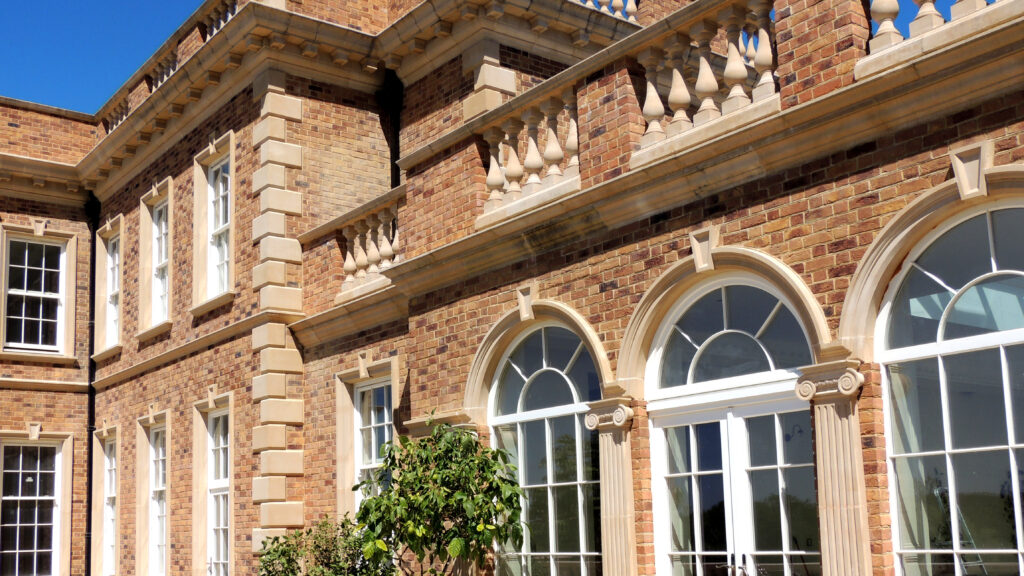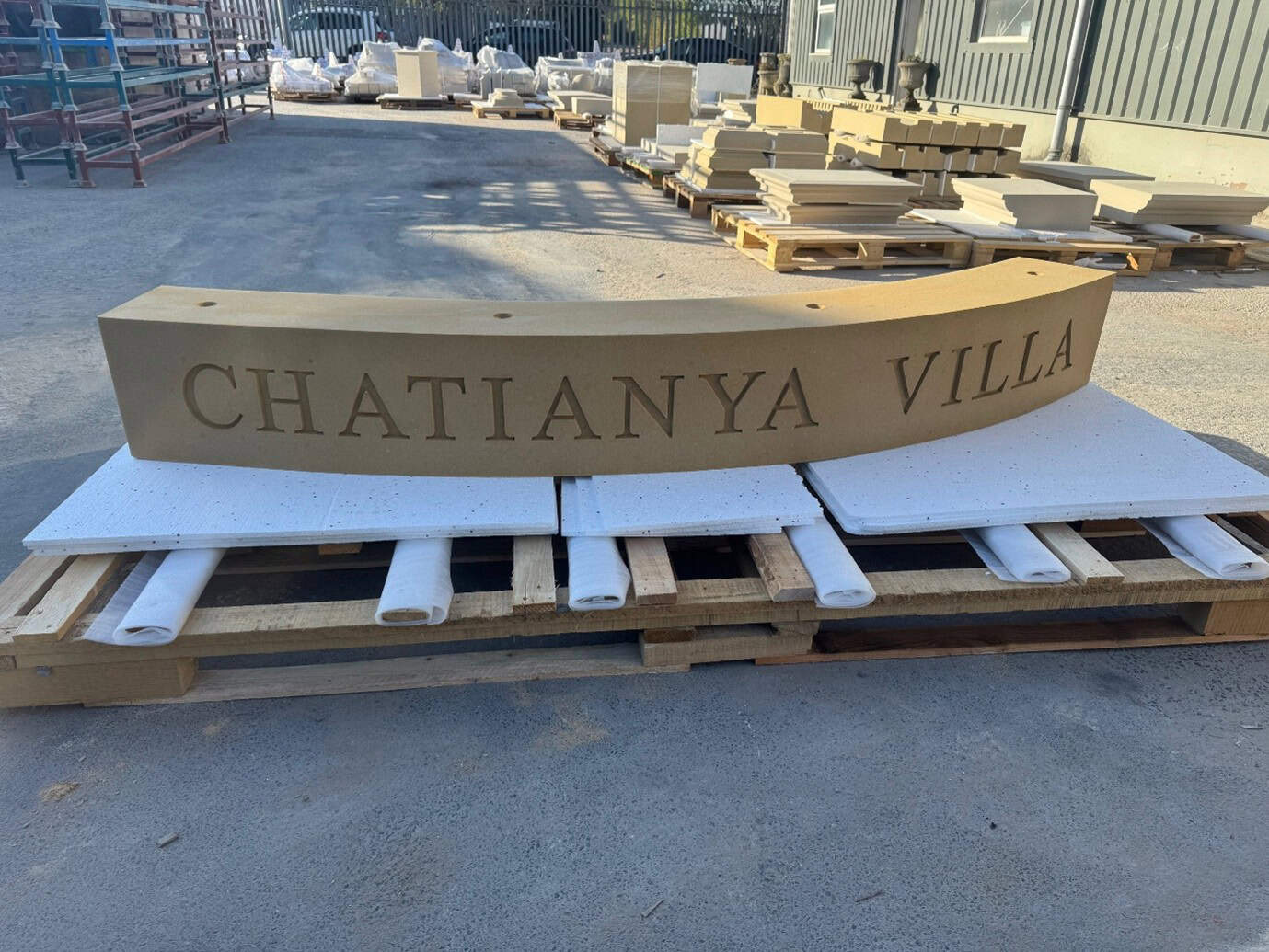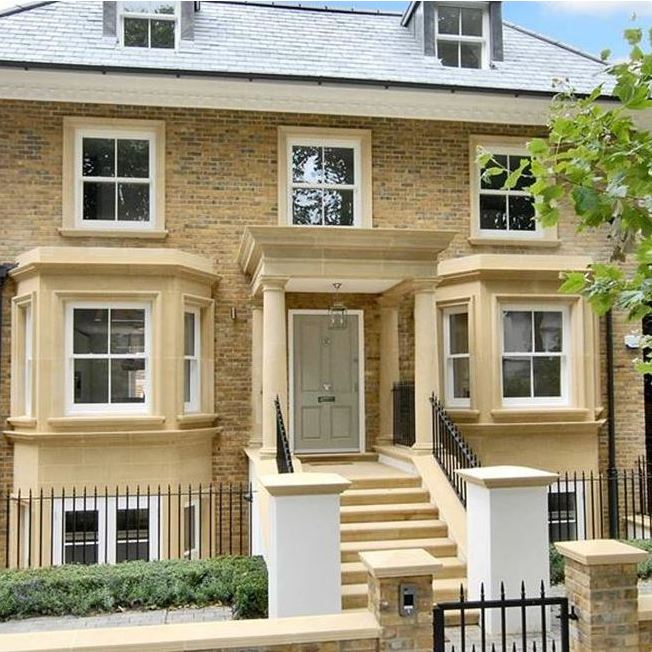The difference between Cast Stone and Natural Stone is that Cast Stone can cost four or five times less than Natural Stone and is available with shorter lead times.
Here we take a closer look at the differences between the two. We consider their distinct characteristics and explore which you should choose for your next project.
It’s true that choosing building materials can often be complex and time consuming. With so many factors to consider, and with budgets and specifications always an important consideration, it’s a question on many builders’ or developers’ lips. Which is the best? Is it Cast Stone, or is it Natural Stone?
It’s probably a good idea to start with what we mean by both. So, a quick definition of each will make it much clearer.

What is Cast Stone?
Cast Stone is a precast reconstructed stone product created by combining sand, cement, water, and colour pigments, together with other bonding elements. It is designed to resemble all kinds of Natural Stone in appearance – including the most popular, sandstone. Because it is manufactured, Cast Stone is free from stratification and has more textural and colour consistency than Natural Stone. Cast Stone is very strong, weathers in a similar way to Natural Stone, and improves in appearance as the years go by.
What is Natural Stone?
Natural Stone is quarried from the earth and has gone through many natural changes over millions of years. Popular throughout history as a building material – particularly marble, granite, limestone, and sandstone – Natural Stone is strong, stable, timeless, and durable. However, Natural Stone can also be expensive as a building material. This is especially the case if you’re making repetitive moulded units.
So, what are the main differences between Cast Stone and Natural Stone?
When looking at the differences between the two, it’s important to consider a range of factors which may influence your decision on which is best for your project:
Availability
Natural Stone tends to have long lead times due to sourcing, carving, transport (most often from abroad) and the time and complications these issues bring. The simple fact is, it can often be difficult to get hold of in the type and size you need.
On the other hand, Cast Stone is available here in the UK with comparatively short lead times. This is especially the case when it comes to repetition of design. An example is cutting and carving Natural Stone for balustrades, where perhaps 500 individual but identical pieces would need to be carved. The Cast Stone option would save you time and money, because just the one mould would be required to produce as many items as you needed.
Cost
Cost is always the biggest difference.
Natural Stone can often be four to five times the cost of Cast Stone. The reason is simple. With Natural Stone, the whole process of extraction, cutting and finishing the stone is a more expensive and time-consuming process than it is for producing Cast Stone.
Because it is manufactured in moulds, with several units being made per day per mould, Cast Stone is a more cost-effective alternative to Natural Stone. So, while being very similar to Natural Stone in appearance, Cast Stone brings with it big cost savings.
Appearance
Cast Stone is made by mixing natural elements like sand, cement, waterproofer, lime pigment and water. The Cast Stone mix is then compressed into moulds to give it a look that resembles the density and texture of Natural Stone. However, unlike Natural Stone, Cast Stone can be manipulated into a certain size, shape, and colour.
Cast Stone can also be manufactured to enhance new buildings or match existing stonework on restoration projects. It is for this reason that Cast Stone is frequently used and accepted in areas with sensitive planning constraints – where regional colours need to be maintained, such as in the Cotswolds.
Depending on the type of Natural Stone used, often the final product doesn’t look exactly like the sample. There are also often requirements in maximum sizing and length, and the material cannot always be seamless.
Detailing
Cast Stone can be used to produce detailed architectural features. Specifying Cast Stone allows you to achieve the aesthetic you desire without any restrictions. Using the highest quality moulds made from timber or MDF, steel, fibreglass, or polyurethane allows for crisp arises, attractive curves and delicate decorative details.
Natural Stone can be carved (though some types are more suitable than others) so that very delicate features can be employed in the same material as used elsewhere on the building.

Consistency
Consistency in Cast Stone is achieved by using specialist mixing methods in both or wet cast and semi-dry products. This delivers uniformity in colour, free of the naturally occurring variations or imperfections found in Natural Stone. In addition, the reduced moisture absorption of Cast Stone results in an improved freeze/thaw effect, improving its durability when compared to natural stone.
Consistency in Natural Stone is delivered through natural causes. These affect the graining and coloration of stone over time. They include mineral deposits, underground springs, temperature, and seismic shifts. These occurrences are impossible to re-create and can only be created by nature, adding unique character and charm.
Sustainability
Increasingly, sustainability and environmental considerations are an important concern for many people. While locally sourced UK Natural Stone is of course available, the most popular stones are often imported from China, Italy, and Turkey – with the quality often dubious – thereby increasing the carbon footprint of Natural Stone. The process of extracting natural stone also impacts the land from where it is quarried through noise pollution, erosion, sedimentation, and loss of habitat. In addition, the actual process of cutting and finishing natural stone relies on heavy energy use, creating dust and noise pollution.
On the other hand, Cast Stone is a more sustainable and environmentally friendly solution as it is manufactured here in the UK, using locally sourced materials wherever possible, and employing an energy-efficient manufacturing process.
Structural Strength
Both Cast and Natural Stone can be used as a structural element where its own weight is supported. This is the case in walls, columns, and facades for example, or in balustrades, porticos, and pillars.

Natural Stone however is structural even where it’s own weight is not supported (as was used in cathedral buildings before steel supports existed).
There are exceptions, however. Cast Stone is produced using high quality fine and coarse aggregates, which makes it very strong in compression, but comparatively weak in tension. Equally, Natural Stone can have imperfections invisible to the human eye, also making it potentially weak in tension. In both cases, this lack of tensile strength can mean additional support is needed in places like window lintels. When using Cast Stone, components such as steel lintels, reinforcement and fixings can be included during the casting process to provide the required tensile strength.
Installation
Cast Stone can be easier and quicker to manufacture and install than its Natural Stone counterpart. As Cast Stone units are formed in moulds, another advantage over Natural Stone is speed of supply. Delivery periods tend to much shorter than for Natural Stone, especially when it comes to repetitively moulded items.
Talk to the Experts
Hopefully, we’ve provided all the information you need about the difference between Cast Stone and Natural Stone.
If you’d like any specific advice about any aspect of specifying and installing Cast Stone, please do feel free to call us on 01773 540704 or email our expert team on info@acanthuscaststone.co.uk .





